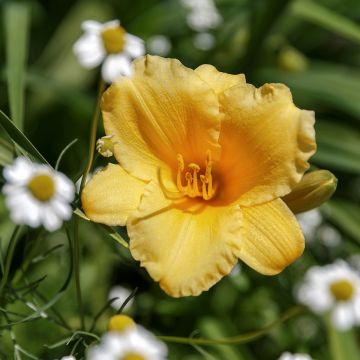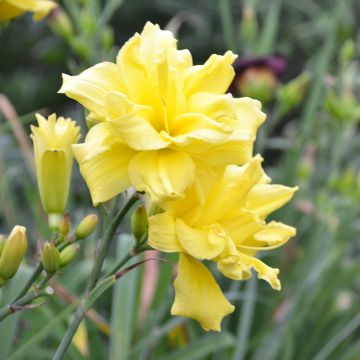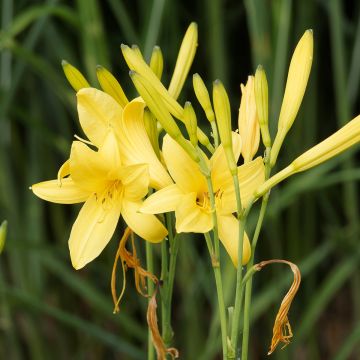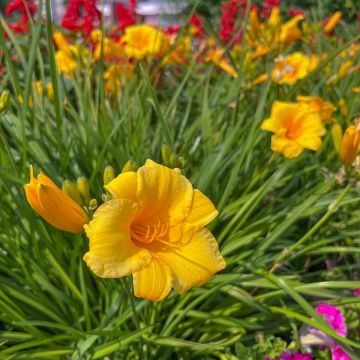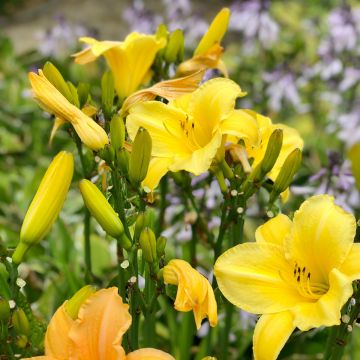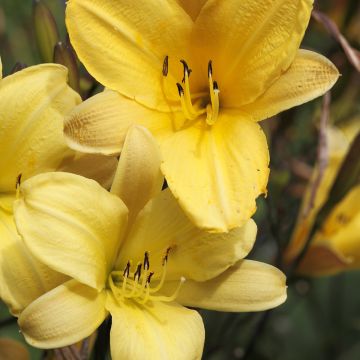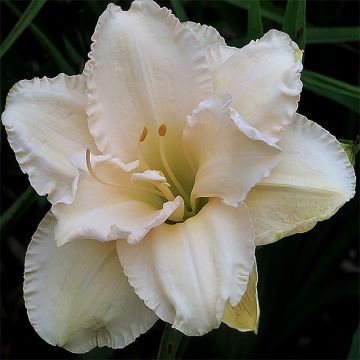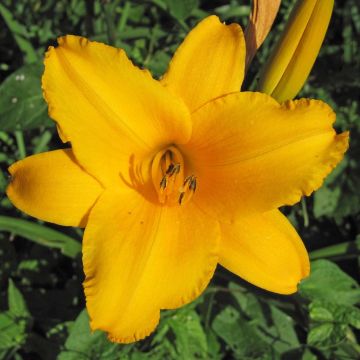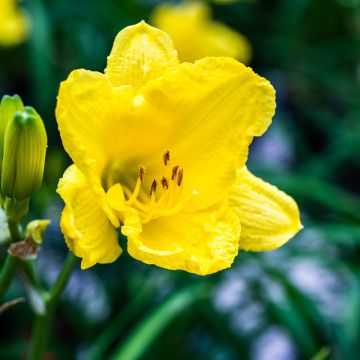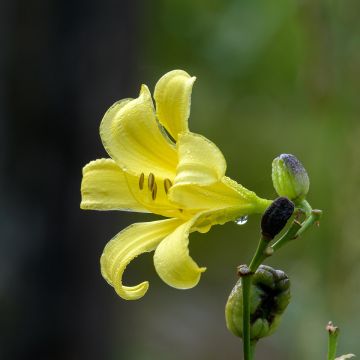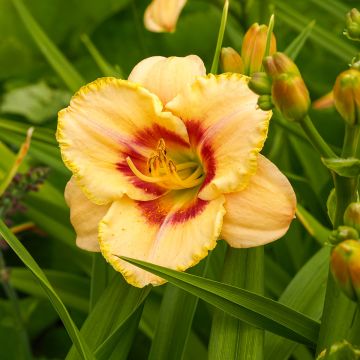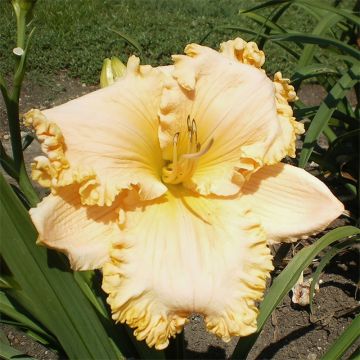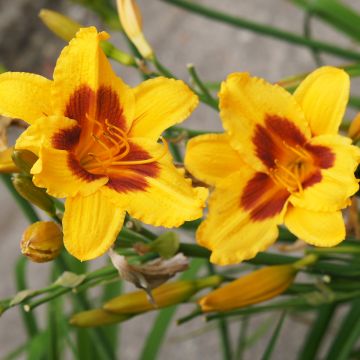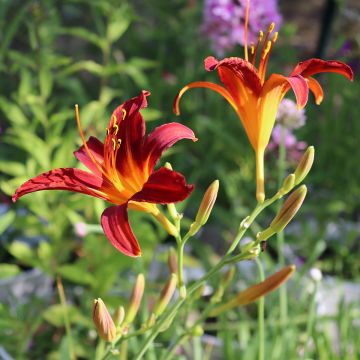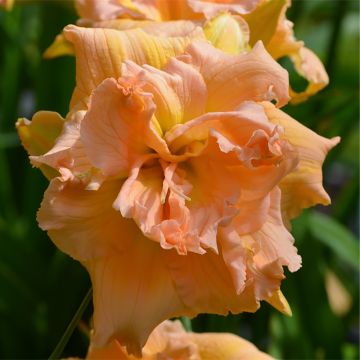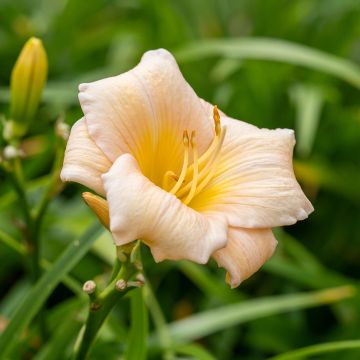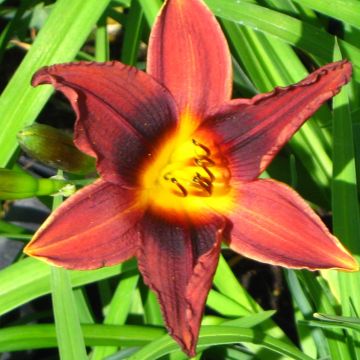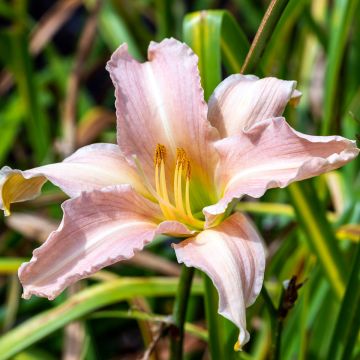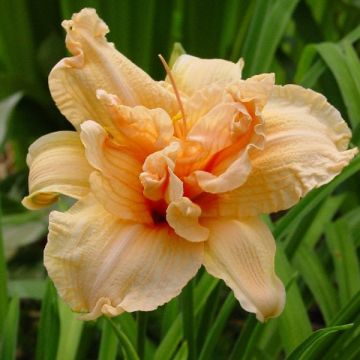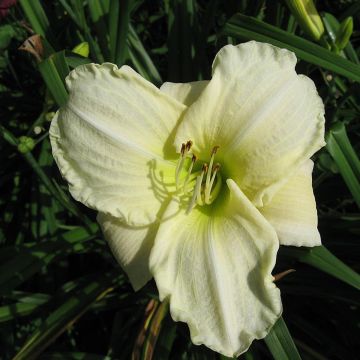Shipping country and language
Your country of residence may be:
Your country of residence is:
For a better user experience on our website, you can select:
Your shipping country:
Andorra
Austria
Belgium
Bulgaria
Canada
Chile
Croatia
Cyprus
Czechia
Denmark
Estonia
Finland
France
Germany
Greece
Hungary
Iceland
Ireland
Italy
Latvia
Lithuania
Luxembourg
Malta
Monaco
Netherlands
Poland
Portugal
Romania
Slovakia
Slovenia
Spain
Sweden
Switzerland
United Kingdom
We only deliver seed and bulb products to your country. If you add other products to your basket, they cannot be shipped.
Language:
French
German
Spanish
English
My Account
Hello
My wish lists
Plantfit
Log in / Register
Existing customer?
New customer?
Create an account to track your orders, access our customer service and, if you wish, make the most of our upcoming offers.
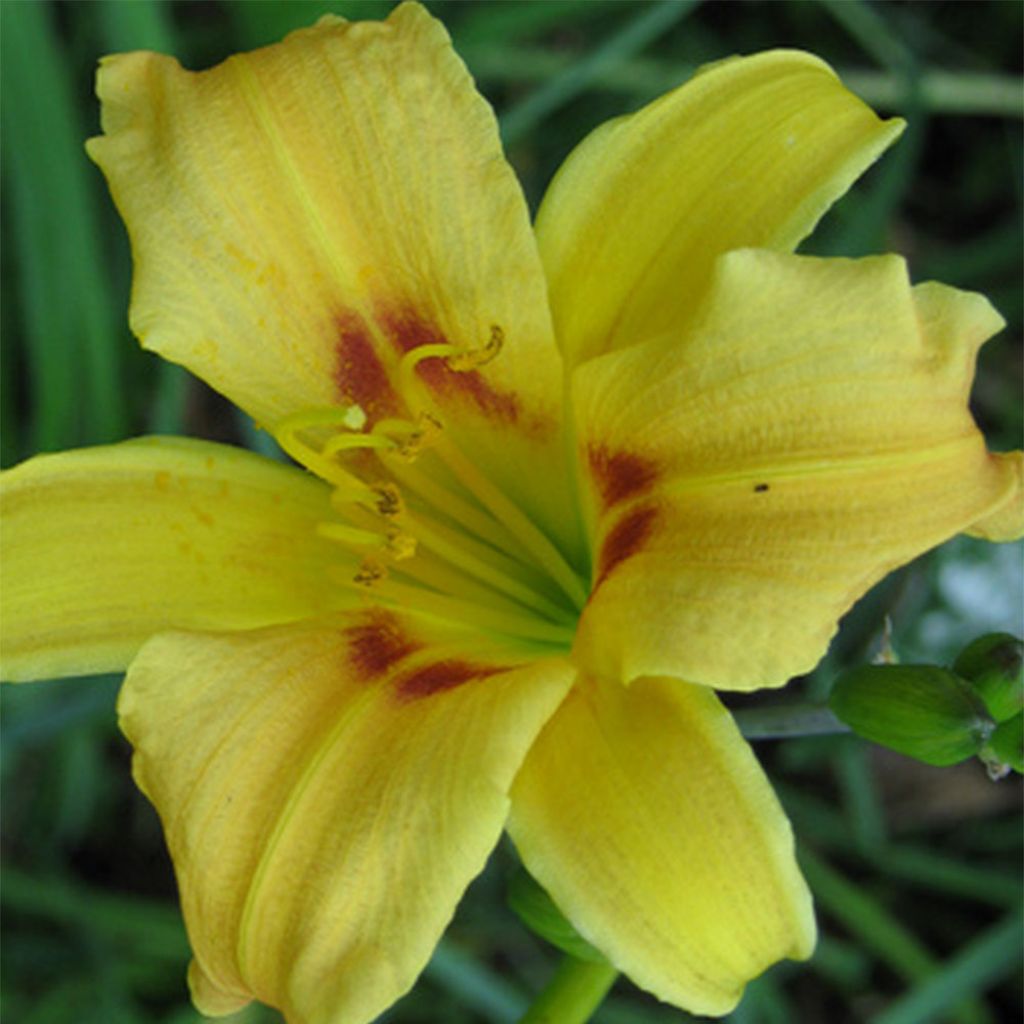

Hémérocalle Pinocchio
Hemerocallis Pinocchio - Daylily
Hemerocallis Pinocchio
Daylily
Why not try an alternative variety in stock?
View all →Order in the next for dispatch today!
Dispatch by letter from €3.90.
Delivery charge from €5.90 Oversize package delivery charge from €6.90.
More information
This item is not available in your country.
Schedule delivery date,
and select date in basket
This plant carries a 12 months recovery warranty
More information
We guarantee the quality of our plants for a full growing cycle, and will replace at our expense any plant that fails to recover under normal climatic and planting conditions.
From €5.90 for pickup delivery and €6.90 for home delivery
Express home delivery from €8.90.
Does this plant fit my garden?
Set up your Plantfit profile →
Description
Although the Daylily or Hemerocallis 'Pinocchio' is certainly not a spectacular variety with huge and intricate flowers, this small, stocky plant is a ball of energy that delivers an early and endless flowering, starting in early June and lasting until August. Its small flowers are light, barely undulating stars but brightly coloured in a soft yellow-orange marked with a brown-red eye in the centre of the petals. 'Pinocchio is an excellent border daylily, exceptionally generous and easy to grow in a not too dry soil. Also, place this daylily full of joy and good humour in a large pot on the patio or balcony!
The genus Hemerocallis belongs to the family Liliaceae. They are perennial and hardy plants whose foliage is deciduous, sometimes semi-evergreen. The variety 'Pinocchio', obtained in 1951, remains one of the best small-sized varieties. It grows quickly in a fairly dense clump that will reach 40 cm (16in) in height, with a relative spread of 40 cm (16in); daylilies tend to spread a little when they like where they are planted. The flowers measure about 8 cm (3in) in diameter. Its petals are quite narrow and weakly undulated on the edges, with a soft yellow colour with orange reflections, marked with a central brown area in the shape of a V. Each flower lasts no more than a day, but the flowering repeats continuously over a very long period between June and August. The stems are stocky and robust and bear many elongated buds. The foliage is linear, bright green and dormant in winter. Daylilies are plants with short rhizomes and fleshy roots that tolerate dry soils but are more opulent and floriferous in fresh soil.
Very easy to grow, these plants thrive in shade and sun. Some are invasive, so don't hesitate to divide the clumps every four or five years, preferably in autumn, after flowering. The daylily is often called "the perfect perennial plant" because of its vibrant colours and ability to tolerate any type of environment. Due to its lack of modesty, it is beautifully exuberant and goes well with other perennials. Plant them in generous clumps at the back of your flower beds. All summer bulb flowers can be planted alongside daylilies. 'Pinocchio will blend perfectly with the decor of a flower garden, planted in large borders in front of crocosmias, penstemons, perennial flaxes or hostas. On a balcony or patio, it will be superb. Large pots of at least 30 cm (12in) deep should be provided, choosing from the dwarf varieties. The flowers are edible: they brighten up salads and decorate desserts, each having its own unique flavour!
Hemerocallis Pinocchio - Daylily in pictures
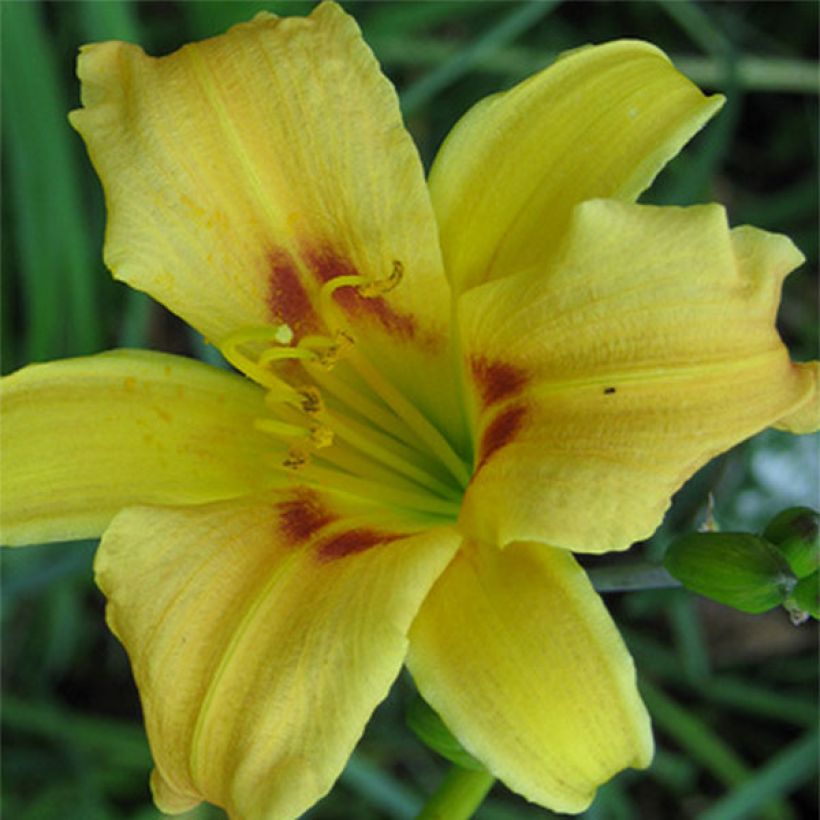

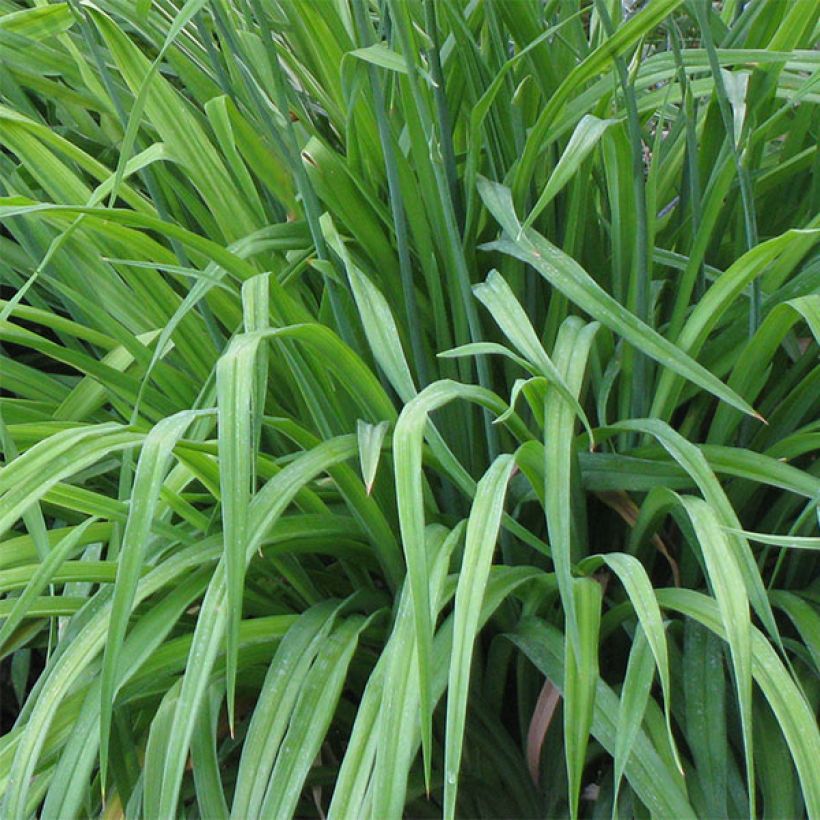

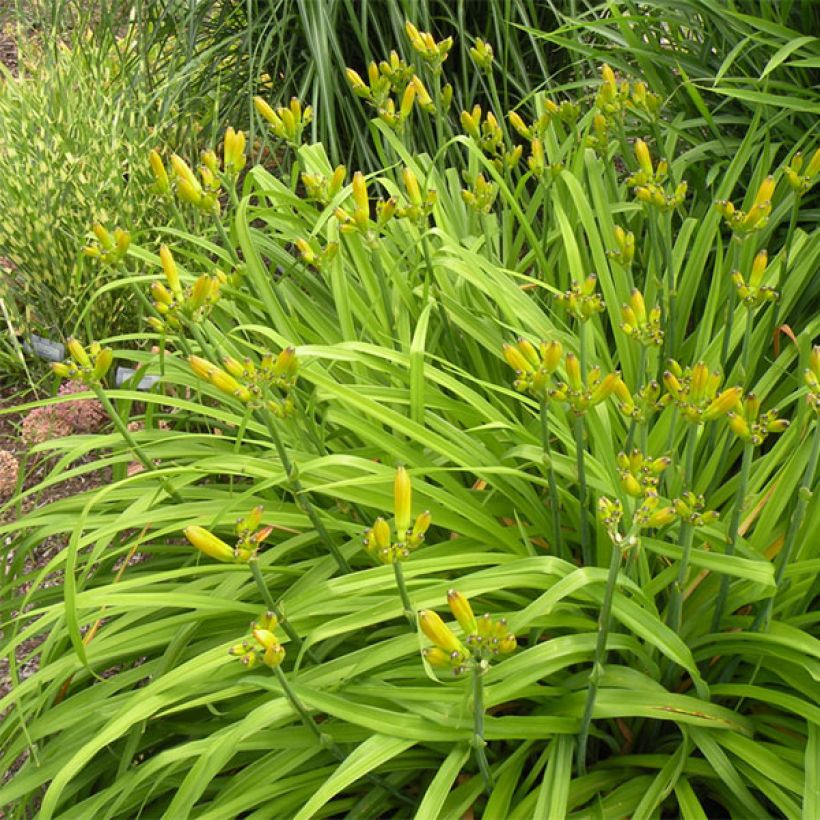

Flowering
Foliage
Plant habit
Botanical data
Hemerocallis
Pinocchio
Hemerocallidaceae
Daylily
Cultivar or hybrid
Other Hemerocallis - Daylilies
Planting and care
To ensure that your Hemerocallis 'Pinocchio' thrives, plant it in well-draining garden soil that is not too clayey and enriched with humus and compost. This will allow your perennial to withstand summer droughts and winter frosts. This variety is easy to grow and not susceptible to pests or diseases, so no treatment is required, and rodents are not attracted to it. Daylilies can grow both in partial shade and full sun, with 4 to 5 hours of daily sunlight being sufficient. Plant by burying the base 3 to 4 cm (1 to 2in) below the surface. If you are planting multiple plants, ensure that there is enough space between them, as the spaces will quickly fill up. For a few weeks after planting, ensure that the soil is moderately moist, but do not overwater. It is advisable to divide the plants, preferably in autumn after flowering.
Planting period
Intended location
Care
This item has not been reviewed yet - be the first to leave a review about it.
Haven't found what you were looking for?
Hardiness is the lowest winter temperature a plant can endure without suffering serious damage or even dying. However, hardiness is affected by location (a sheltered area, such as a patio), protection (winter cover) and soil type (hardiness is improved by well-drained soil).

Photo Sharing Terms & Conditions
In order to encourage gardeners to interact and share their experiences, Promesse de fleurs offers various media enabling content to be uploaded onto its Site - in particular via the ‘Photo sharing’ module.
The User agrees to refrain from:
- Posting any content that is illegal, prejudicial, insulting, racist, inciteful to hatred, revisionist, contrary to public decency, that infringes on privacy or on the privacy rights of third parties, in particular the publicity rights of persons and goods, intellectual property rights, or the right to privacy.
- Submitting content on behalf of a third party;
- Impersonate the identity of a third party and/or publish any personal information about a third party;
In general, the User undertakes to refrain from any unethical behaviour.
All Content (in particular text, comments, files, images, photos, videos, creative works, etc.), which may be subject to property or intellectual property rights, image or other private rights, shall remain the property of the User, subject to the limited rights granted by the terms of the licence granted by Promesse de fleurs as stated below. Users are at liberty to publish or not to publish such Content on the Site, notably via the ‘Photo Sharing’ facility, and accept that this Content shall be made public and freely accessible, notably on the Internet.
Users further acknowledge, undertake to have ,and guarantee that they hold all necessary rights and permissions to publish such material on the Site, in particular with regard to the legislation in force pertaining to any privacy, property, intellectual property, image, or contractual rights, or rights of any other nature. By publishing such Content on the Site, Users acknowledge accepting full liability as publishers of the Content within the meaning of the law, and grant Promesse de fleurs, free of charge, an inclusive, worldwide licence for the said Content for the entire duration of its publication, including all reproduction, representation, up/downloading, displaying, performing, transmission, and storage rights.
Users also grant permission for their name to be linked to the Content and accept that this link may not always be made available.
By engaging in posting material, Users consent to their Content becoming automatically accessible on the Internet, in particular on other sites and/or blogs and/or web pages of the Promesse de fleurs site, including in particular social pages and the Promesse de fleurs catalogue.
Users may secure the removal of entrusted content free of charge by issuing a simple request via our contact form.
The flowering period indicated on our website applies to countries and regions located in USDA zone 8 (France, the United Kingdom, Ireland, the Netherlands, etc.)
It will vary according to where you live:
- In zones 9 to 10 (Italy, Spain, Greece, etc.), flowering will occur about 2 to 4 weeks earlier.
- In zones 6 to 7 (Germany, Poland, Slovenia, and lower mountainous regions), flowering will be delayed by 2 to 3 weeks.
- In zone 5 (Central Europe, Scandinavia), blooming will be delayed by 3 to 5 weeks.
In temperate climates, pruning of spring-flowering shrubs (forsythia, spireas, etc.) should be done just after flowering.
Pruning of summer-flowering shrubs (Indian Lilac, Perovskia, etc.) can be done in winter or spring.
In cold regions as well as with frost-sensitive plants, avoid pruning too early when severe frosts may still occur.
The planting period indicated on our website applies to countries and regions located in USDA zone 8 (France, United Kingdom, Ireland, Netherlands).
It will vary according to where you live:
- In Mediterranean zones (Marseille, Madrid, Milan, etc.), autumn and winter are the best planting periods.
- In continental zones (Strasbourg, Munich, Vienna, etc.), delay planting by 2 to 3 weeks in spring and bring it forward by 2 to 4 weeks in autumn.
- In mountainous regions (the Alps, Pyrenees, Carpathians, etc.), it is best to plant in late spring (May-June) or late summer (August-September).
The harvesting period indicated on our website applies to countries and regions in USDA zone 8 (France, England, Ireland, the Netherlands).
In colder areas (Scandinavia, Poland, Austria...) fruit and vegetable harvests are likely to be delayed by 3-4 weeks.
In warmer areas (Italy, Spain, Greece, etc.), harvesting will probably take place earlier, depending on weather conditions.
The sowing periods indicated on our website apply to countries and regions within USDA Zone 8 (France, UK, Ireland, Netherlands).
In colder areas (Scandinavia, Poland, Austria...), delay any outdoor sowing by 3-4 weeks, or sow under glass.
In warmer climes (Italy, Spain, Greece, etc.), bring outdoor sowing forward by a few weeks.
